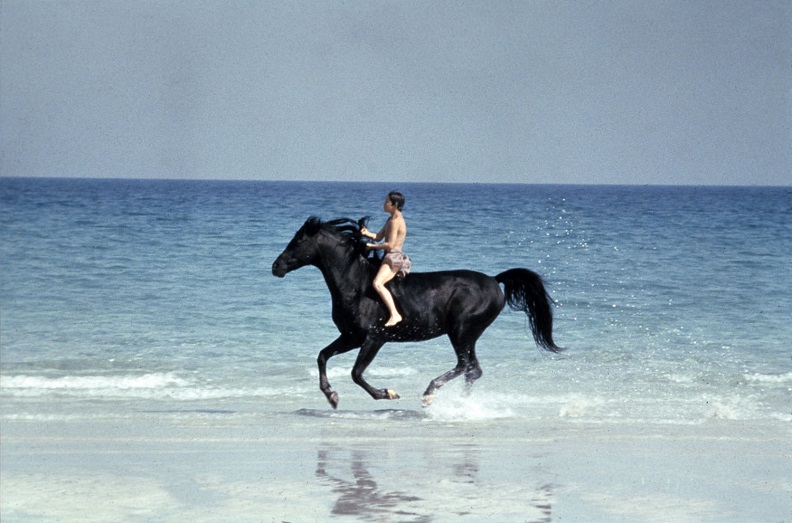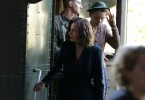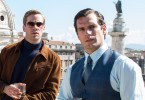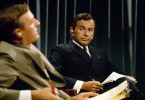The Black Stallion
Director: Carroll Ballard
Spine #765
(Blu-ray/DVD)
Not to be confused with frequently adapted Anna Sewell novel Black Beauty, Carroll Ballard’s The Black Stallion is a film of literally few words. A mostly linear tale with a loose post-colonial allegory, it stands less for its accessible didactic and more for showcasing something text simply can’t convey in a very consistent way: sound. The editing tandem of Robert Dalva and Alan Splet, both recognized for their work at the Academy Awards in 1979, set a new standard for the way in which a film should be assembled.
Alec (Kelly Reno) stumbles upon a restrained and aggressive colt while sailing in the Atlantic Ocean with his father. After floating into a hurricane, Alec and the stallion are the only two survivors of the storm. A close, symbiotic bond forms between the pair, and they are rescued by a group fishermen. With the help of retired jockey Henry (Mickey Rooney), Alex trains the horse, christened “The Black,” for competition after returning home to a shaken mother (Teri Garr).
The synergy of Reno and Rooney is something to be lauded as the often brash curmudgeon returns to his passion with the help of a stubborn youth. Reno, who did little with his acting career after a near-fatal collision, handles his ground as one of the most capable child performers of the film’s era. Still, little could be done without the help of Cass Ole and Fae Jur, two Arabic Stallions portraying the titular animal in a way that yielded some iconic imagery.
Carmine Coppola scores the film with a George Tipton-esque command over his material, and Splet’s audio mastery feels organic and clear, even 35 years after the piece’s theatrical release. Certain instances in particular — like the maritime accompaniment that trails Alec and The Black as they play amongst a muddy coast with the horizon as their backdrop — feel warm and appropriately infantile. Later, while training, this same composition grows more of an edge, adding layers of instrumentation that echo wisdom and growth. The film dilutes most spoken word until its final act, and it easily could have been made without the use of dialogue at all. The few lines that do appear feel as though they were implemented out of fear of alienating audiences. Still, this musing does little to disqualify the technical achievement.
Like the frames from last year’s Timbuktu, many of The Black Stallion‘s stills are nothing short of prophetic. Alec’s lone silhouette upon a massive coast and the stallion’s sprint across the dessert could warrant a brief pause while viewing, if only to take in these J. M. W. Turner-like images for a few more seconds.
The Black Stallion is not a coming-of-age film; it’s a coming-to-age film that brings our no-nonsense side back to a time of wonder. Certain moments may seem juvenile — and even troubling — but it’s difficult to categorize as anything short of classic.





